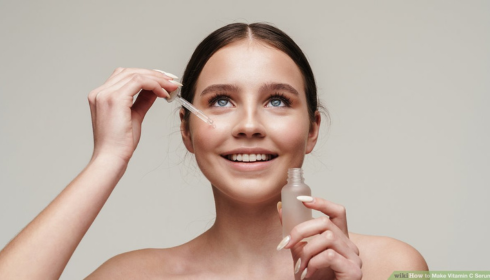Using a vitamin C serum has become a go-to step in many skincare routines for a reason—it’s one of the most powerful antioxidants that fights free radicals, helps fade dark spots, and boosts collagen production. But to get the most out of this brightening superstar, your skin needs to be properly prepared. Applying vitamin C serum on skin that hasn’t been prepped correctly is a bit like painting over dust—it won’t stick well, and the results won’t last. Prepping your skin for vitamin C isn’t complicated, but it’s essential if you want the full glow-up.
Start with cleansing. Your face needs to be clean, not just makeup-free. Throughout the day, skin collects oil, pollution, sweat, and microscopic particles that can clog pores and prevent serums from being absorbed effectively. Choose a gentle cleanser that doesn’t strip the skin barrier. A foaming or gel-based cleanser works great if your skin tends to be oily or acne-prone, while creamier textures are better for dry or sensitive types. The goal here is to create a fresh, balanced surface—think of it as setting the stage for the serum to shine.
Once your skin is clean, gently pat it dry. This may sound like a minor step, but rubbing your skin with a towel—especially a rough one—can create microtears or irritation that you definitely don’t want before applying an active like vitamin C. Patting dry helps maintain the skin’s natural barrier and keeps things calm and receptive.
Some people jump straight into serum after cleansing, but there’s one optional step that can make a big difference: a pH-balancing toner. Vitamin C (particularly in its most effective form, L-ascorbic acid) works best in a slightly acidic environment. A gentle toner can help bring your skin to that ideal pH range, enhancing absorption and boosting results. Look for formulas that are alcohol-free and include soothing or hydrating ingredients like rose water, chamomile, or glycerin.
Now that your skin is clean, balanced, and prepped, it’s time for the main act—the vitamin C serum itself. The trick here is not to overdo it. You don’t need to bathe your face in serum for it to work. A few drops—usually 2 to 4—are enough to cover the entire face and neck. Use your fingertips to press the serum into your skin gently, allowing it to absorb fully. Rubbing too aggressively can cause irritation and waste product.
Timing matters too. Vitamin C is often used in morning routines because it helps protect your skin from environmental stressors like UV rays and pollution. Think of it as an invisible shield that boosts your sunscreen’s protection. Just be sure to wait a minute or two after applying the serum before continuing with the next steps. This short pause allows the serum to sink in fully, so it doesn’t get diluted or layered incorrectly.
After the serum, it’s important to follow up with a moisturizer. Even if your serum is hydrating, it likely won’t provide enough moisture on its own—especially in dry or cold weather. Choose a lightweight moisturizer in the morning, particularly one that layers well under sunscreen. The moisturizer helps seal in the vitamin C and keeps the skin barrier supported, which is crucial when using active ingredients.
And yes, sunscreen is a must. While vitamin C provides antioxidant protection, it doesn’t replace SPF. In fact, using both together creates a powerful combo: vitamin C helps neutralize free radicals that sneak past your sunscreen, giving your skin double the defense. Look for a broad-spectrum SPF of at least 30, and apply it generously as the final step in your morning routine. In the evening, you can still use vitamin C, though many people prefer to alternate it with other active ingredients like retinol or exfoliating acids. If you choose to use it at night, prep your skin the same way—cleanse, tone (if needed), serum, moisturizer. Night use is especially helpful for targeting pigmentation or post-acne marks, giving your skin time to regenerate as you sleep. Over time, a consistent skincare routine with antioxidant support also plays a subtle but meaningful role in promoting strong immunity for women, especially when combined with healthy habits and stress management.
Ultimately, prepping your skin for vitamin C face serum isn’t about adding more products—it’s about creating the right environment for your serum to work its magic. With clean, balanced, and well-moisturized skin, you’ll see faster, longer-lasting results. Brighter skin, fewer spots, and a smoother texture aren’t just possible—they’re totally within reach when your skincare routine starts with smart preparation.
